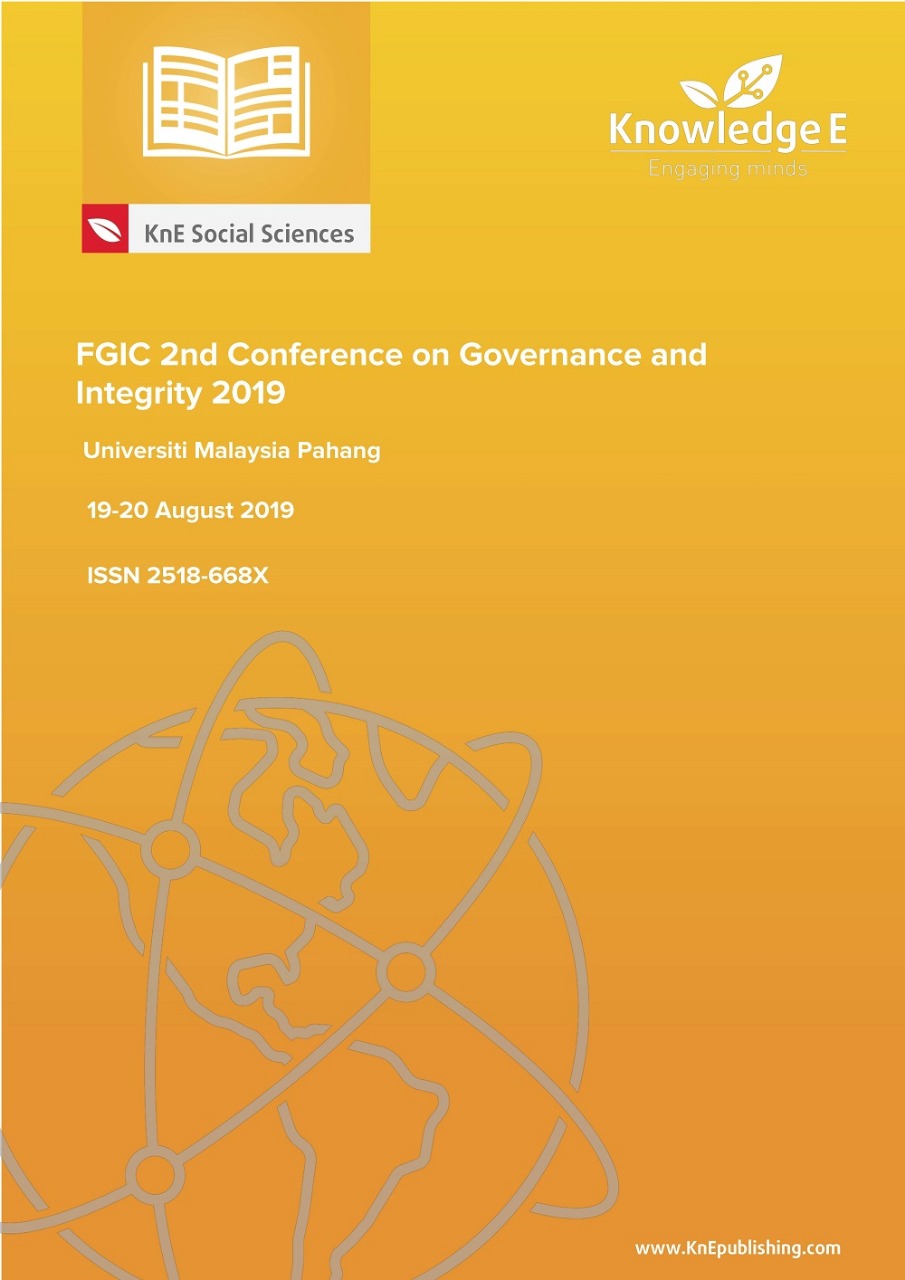The Link between Relational Benefit to Relationship Quality in Priority Banking Services in Indonesia
DOI:
https://doi.org/10.18502/kss.v3i22.5043Abstract
Relational benefit has an important role in improving relationship quality in a consumer services company, particularly in credence service. However, there are only a few research on the link between relational benefit and relationship quality, especially in credence service like priority banking services. The objective of this study is to fulfill this gap by investigating the links of relational benefit on satisfaction and trust. A survey questionnaire was run to 338 priority banking customers in Jakarta. This study found that functional benefit has a significant influence on relationship satisfaction and trust, while social benefit also has a significant influence on satisfaction and trust. The findings imply that service providers like bankers need to consider the functional benefit and social benefit as it directly affects their customer’s relationship satisfaction and trust. The result of this research is crucial when the intended customer is an important segment like the priority customers who have large deposits and investment products in the banks.
References
Al-alak B.A.M., and Alnawas I.A.M. (2010) Evaluating the Effect of Marketing Activities on Relationship Quality in the Banking Sector: The Case of Private Commercial Banks in Jordan, International Journal of Marketing Studies, 2, (1).
Barnes J.G. (2003), Establishing Meaningful Customer Relationships: Why Some Companies and Brands Mean More to Their Customers, Managing Service Quality, 13(3), 178-186.
Berscheid, E. (1994). Interpersonal relationships. Annual review of psychology, 45(1), 79-129.
Berscheid, E., Snyder, M., & Omoto, A. M. (1989). The relationship closeness inventory: Assessing the closeness of interpersonal relationships. Journal of Personality and Social Psychology, 57(5), 792.
Bendapudi, N., & Berry, L. L. (1997). Customers’ motivations for maintaining relationships with service providers. Journal of Retailing, 73(1), 15-37.
Blackburn, S. (2005). The Oxford dictionary of philosophy. OUP Oxford.
Crosby, L.A., Evans, K.R. and Cowles, D. (1990), Relationship Quality in Service Selling: An Interpersonal Influence Perspective, Journal of Marketing, 54 ( July), pp.68-81.
Czepiel, J.A., (1990), Managing Relationships with Customers: A Differentiating Philosophy of Marketing’, in D.E. Bowen, R.B. Chase and T.G. Cummings (eds), Service Management Effectiveness: Balancing Strategy, Human Resources, Operations and Marketing, SanFrancisco: Jossey-Bass Inc.
Doney M. Patricia and Cannon P. Joseph (1997), The Examination of the Nature of Trust in Buyer-Seller Relationships, Journal of Marketing, Vol.61, April, pp.35-51.
Gao, H., & Liu, D. (2014). Relationship of trustworthiness and relational benefit in electronic catalog markets. Electronic Markets, 24(1), 67-75.
Gutek, B. A., Bhappu, A. D., Liao-Troth, M. A., & Cherry, B. (1999). Distinguishing between service relationships and encounters. Journal of Applied Psychology, 84(2), 218.
Hair Jr, J. F., Hult, G. T. M., Ringle, C., & Sarstedt, M. (2016). A primer on partial least squares structural equation modeling (PLS-SEM). Sage Publications.
Hair J.F., Black W.C., and Babin B.J. (2009), Multivariate Data Analysis, Prentice-Hall, 7
Hennig-Thurau, T., Gwinner, K.P. and Gremler, D.D. (2002), A integration of relational benefits and relationship quality, Journal of Service Research, Vol. 4 No. 3, pp. 230- 47.
Hennig-Thurau, T. (2004), Customer orientation of service employees, International Journal of Service Industry Management, 15(5), 460-478.
Hinde, R. A. (1979). Towards understanding relationships (Vol. 18). Academic Press.
Iacobucci, D., and Ostrom, A. (1996), Commercial and interpersonal relationship; Using the structure of interpersonal relationships to understand the individual-toindividual, individual to firm and firm-to-form relationship in commerce, International Journal of Research in Marketing, Vol.13, pp.53-72.
Jang, J.H., Kim, S.W., and Lee, Y.S. (2013), The effect of relationship benefit on relationship quality and store loyalty from convergence environments-NPS analysis and moderating effects, Electron Commerce Res, Vol.13, pp.291-315.
Kim, M., Kim, B., & Oh, S. (2018). Relational Benefit on Satisfaction and Durability in Strategic Corporate Social Responsibility. Sustainability, 10(4), 1104.
Liang, C.J., and Wang, W.H. (2007), The Behavioural Sequence of the Financial Services Industry in Taiwan: Service Quality, Relationship Quality, and Behavioural Loyalty, The Service Industries Journal, Vol.26, No.2, pp.119–145.
Moliner A. Miguel (2009), Loyalty, Perceive Value and Relationship Quality in Healthcare Services, Journal of Service Management, Vol. 20 No. 1, pp. 76-97.
Morgan, Robert M. and Shelby D. Hunt (1994), The Commitment-Trust Theory of Relationship Marketing, Journal of Marketing, 58 ( July), 20-38.
Meng J.G. and Elliott K.M. (2008), Predictors of relationship quality for luxury restaurants, Journal of Retailing and Consumer Services, pp. 509– 515.
Ibrahim, H., & Najjar, F. (2008). Relationship Bonding Tactics, Personality Traits, Relationship Quality, and Customer Loyalty: Behavioral Sequence in Retail Environment. ICFAI journal of services marketing, 6(4).
Price L. and Arnould E. (1999), Commercial Friendships: service provider-client relationship in context, Journal of Marketing, Vol. 63, Iss.4, pp. 38-56.
Prayoga, I. M. S., Yasa, N. N. K., & Wardana, M. (2015). Relational Benefit, Kepuasan, Dan Loyalitas Pelanggan Pada Bengkel Pt Honda Dewata Motor. Jurnal Manajemen dan Kewirausahaan, 17(1), 11-20.
Reynolds, K.E., and Beatty, S.E. (1999), Customer benefit and company consequences of customer-salesperson relationships in retailing, Journal of Retailing, 75(1), 11-32.
Smith, J.B. (1999), Buyer-seller relationships: similarity, relationship management, and quality, Psychology and Marketing, Vol. 15 No. 1, pp. 3-21.
Turner, R. H. (1970). Family interaction. New York, NY John Wiley.
Liang, C. J., & Wang, W. H. (2006). The behavioural sequence of the financial services industry in Taiwan: Service quality, relationship quality and behavioural loyalty. The
Service Industries Journal, 26(2), 119-145.
Wish, M., Deutsch, M., & Kaplan, S. J. (1976). Perceived dimensions of interpersonal relations. Journal of Personality and social Psychology, 33(4), 409
Yen Chang-Hua, Liu Li-Ling, Chen Chien-Yu and Lee Tzy-Yau (2014), Customer
relational benefit and relationship marketing outcome: comparing three transaction types of travel product, Asia Pacific Journal of Tourism Research.

